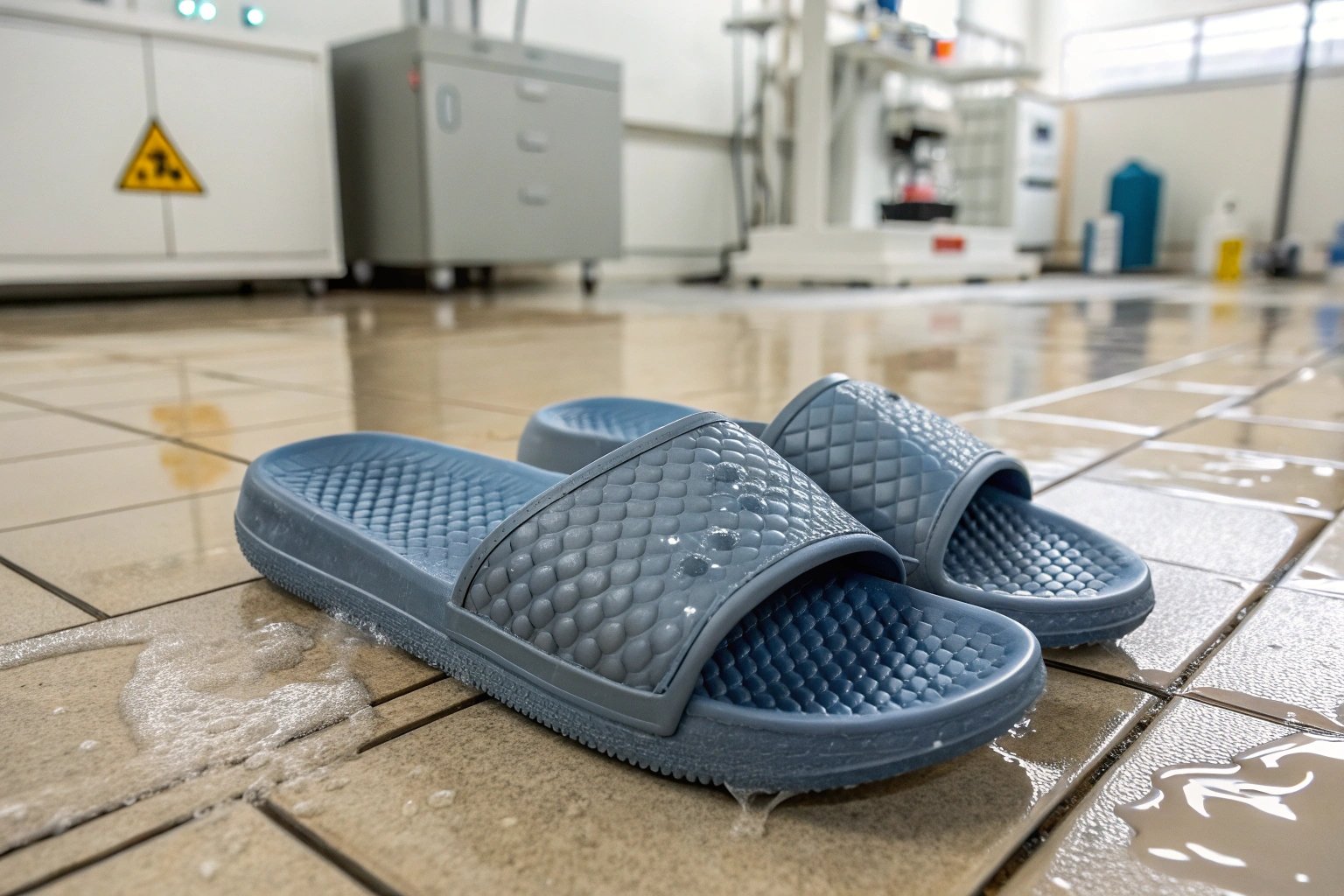In an increasingly safety-conscious world, one question often pops up: how to test the anti-slip performance of home slippers?
Slipper testing involves standard methods to mimic scenarios that occur on wet or dry surfaces. Testing anti-slip performance is essential for manufacturers to ensure slipper safety. Standard methods involve creating simulated conditions that mimic wet and dry surfaces. This ensures the slippers have a reliable grip.

Slippers might seem basic, but testing their grip requires a step-by-step process that involves keen observation and scientific technique. Knowing how to effectively test these surface interactions can prevent unnecessary accidents and add value for customers.
Why is anti-slip testing needed?
One slip is all it takes to turn a convenient slipper into a safety hazard. Testing is key to protecting users from potential injuries.
Anti-slip testing is crucial to eliminate potential accidents caused by slippers. It ensures reliability in grip across various surfaces, keeping the end-user safe, and improving product confidence in the market.

Dive deeper into anti-slip testing requires understanding the slip index and coefficient of friction. The slip index shows how the slipper performs under conditions like wet tiles or slick wooden floors. Coefficient of friction is another metric used to measure slipper’s grip on surfaces. Manufacturers often employ lab setups mimicking real-life conditions — like using inclines, simulated floors, or water-laden areas. By understanding these metrics, one can gauge the slipper’s performance and make necessary improvements before it reaches consumers.
What methods are commonly used for testing?
It’s not just walking; each slipper undergoes a meticulous testing process, revealing insights beyond simple use.
Tools like tribometers gauge slipper friction levels by measuring static and dynamic coefficients. Routine testing ensures slippers remain safe across various environments. These readings reveal if materials need improvement.

Dive deeper into specific procedures involves understanding methods like dry static testing, wet dynamic analysis, and incline resistance evaluation. Dry static testing helps in measuring slipper stability on smooth surfaces. Wet dynamic analysis involves checking how slippers hold up while walking on watery floors, with inclines identifying slipper grip effectiveness on slopes. Each method plays its part in giving manufacturers insights about their products, ensuring quality and reliability. These methodical techniques result in producing slippers that meet rigorous safety standards, thus optimizing customer satisfaction.
How can manufacturers improve anti-slip features?
Enhancing slipper performance doesn’t just happen; it requires innovations and continual advancements.
Innovative materials like textured rubber or special polymers enhance slipper grip. Investment in continual research can lead to improved safety in slipper design and functionality.

Dive deeper into improving slipper features demands attention to material science and customer feedback. Materials like patterned rubber with ridges provide better traction. Engineering innovations can involve changing chemical compounds to enable stronger adherence without compromising comfort. Consulting customer feedback is invaluable. Listening to users gives insight into demands and challenges they’re facing. Combining their observations with technological advancements manufactures slippers that continue to remain a trusted choice within the safety domain.
Conclusion
Anti-slip testing matters because it ensures the effective grip of slippers, preventing avoidable accidents and enhancing confidence in safety.

